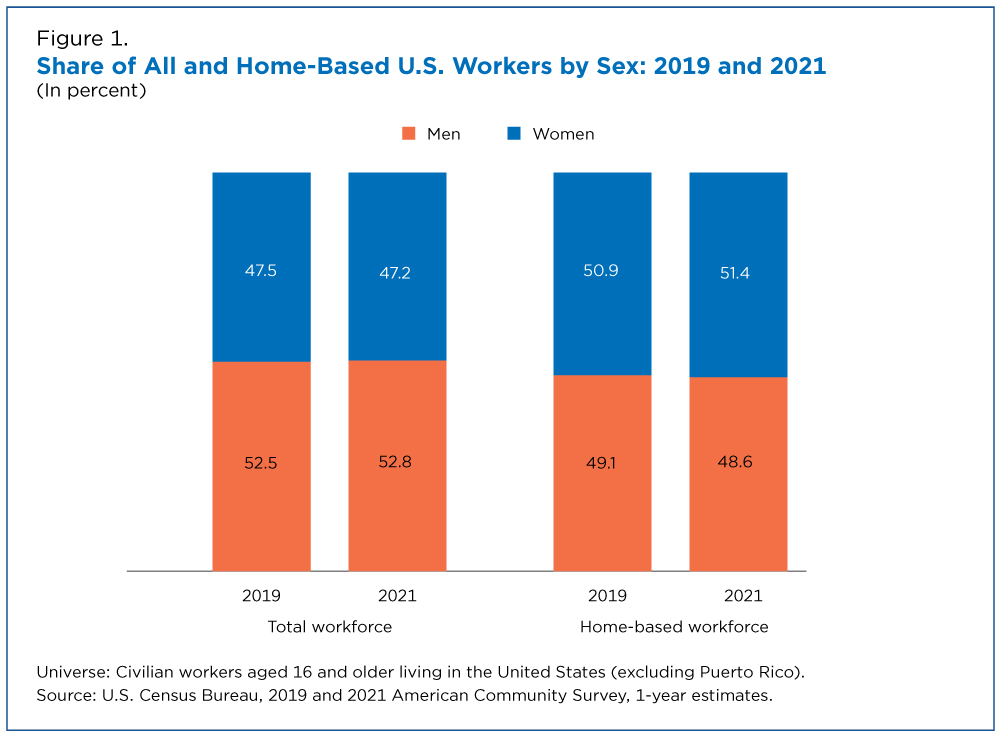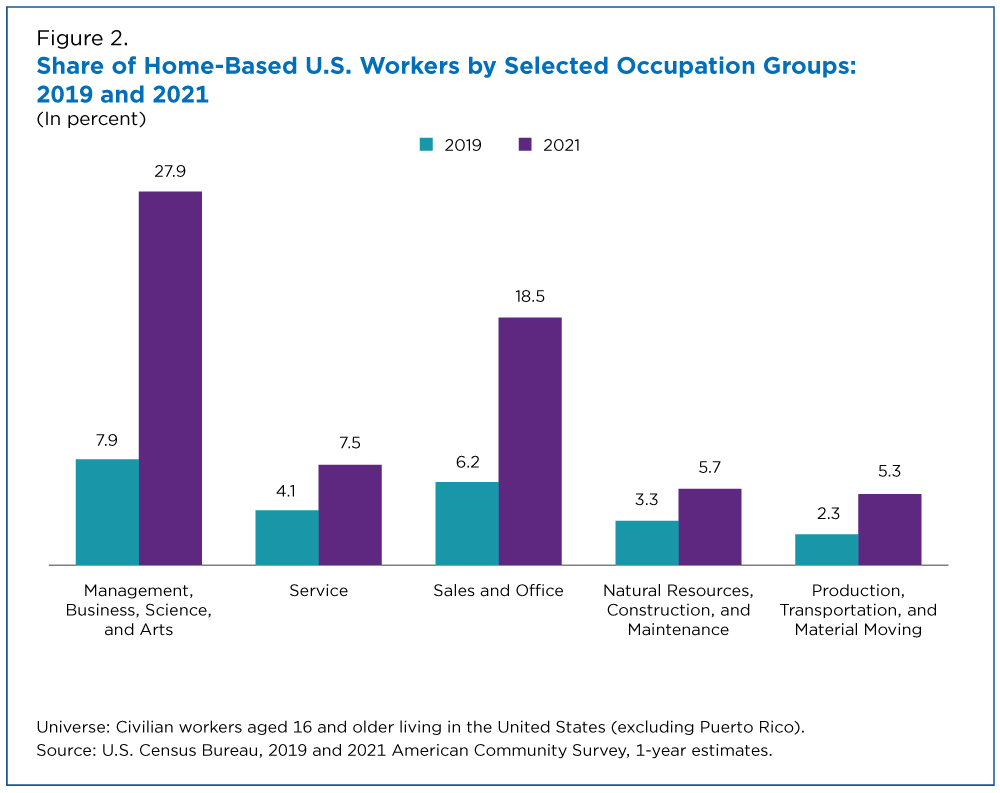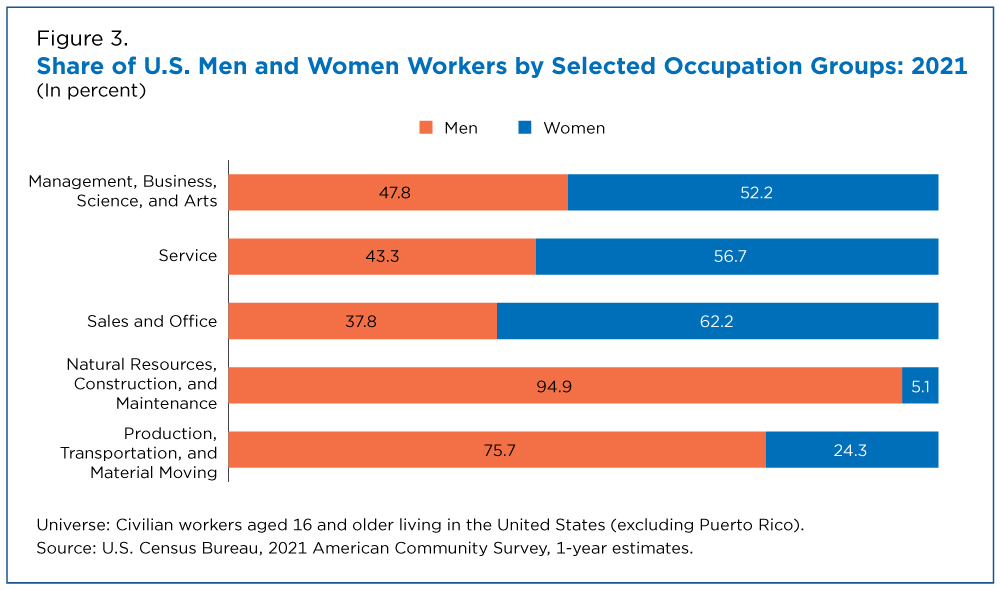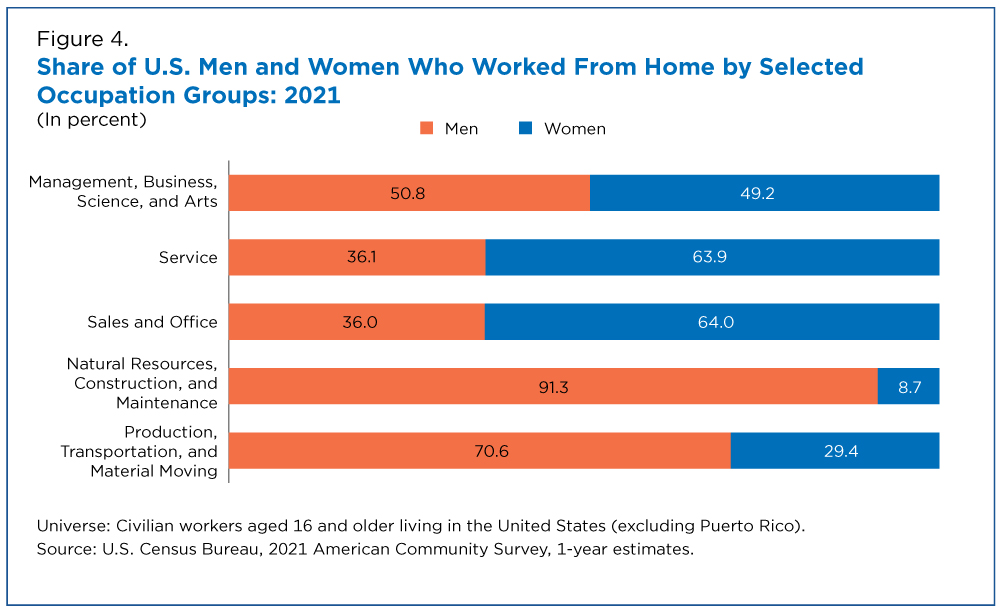Share of Remote Workers Tripled from 2019 to 2021, Most Were Women
Women, already the majority of home-based workers in 2019, increased to a slightly larger share of a growing home-based U.S. workforce in 2021, after the onset of the COVID-19 pandemic.
Working from home was among the safety measures adopted during the COVID-19 public health emergency (which has since been lifted) to reduce transmission of the novel coronavirus. As a result, the percentage of home-based workers in the United States tripled from 5.7% of all workers in 2019 to 17.9% in 2021 — an increase of nearly 19 million workers, according to American Community Survey (ACS) 1-year data.
In four out of five occupation groups, women made up a larger share of home-based workers than of all workers.
This shift has had social and economic impacts including on caregiving roles, actual or perceived workplace productivity, professional advancement opportunities and commuting burden.
Majority of Home-Based Workers are Women
In 2021, the majority (52.8%) of workers were men but women made up the majority (51.4%) of home-based workers.
Despite the increase in home-based workers, the share of women who worked from home each year in 2019 and 2021 was broadly similar.
Working from Home More Common in Some Occupations
Certain occupations may lend themselves to home-based work more than others. ACS data show a strong relationship between occupation (organized into five groups for this analysis) and the percentage of workers who worked from home (Figure 2).
In 2019, a relatively small percentage worked from home in every occupation group but the highest share was in management, business, science and arts occupations like insurance underwriters, mental health counselors and marketing managers.
The percentage of home-based workers rose for each occupation in 2021 but the biggest share (about 28%) of home-based workers was still in management, business, science and arts occupations.
In both 2019 and 2021, production, transportation and material moving occupations (bakers, machinists and taxi drivers) had the lowest percentage of home-based workers (2.3% and 5.3%, respectively).
Women Working From Home Varies by Occupation Group
In 2021, women made up the majority (52.2%) of U.S. workers in management, business, science and arts occupations; service occupations (56.7%); and sales and office occupations (62.2%).
Meanwhile, men made up 94.9% of the nation’s workers in the natural resources, construction and maintenance occupations and 75.7% in production, transportation and materials moving occupations (Figure 3).
The patterns shifted somewhat among home-based workers. In four out of five occupation groups, women made up a larger share of home-based workers than of all workers (Figure 4).
In service occupations and sales and office occupations, for example, around 64% of home-based workers were women, compared to 56.7% and 62.2% of all workers, respectively (Figure 3).
Women were similarly over-represented among home-based workers in natural resources, construction and maintenance occupations; they accounted for around 5% of all workers and about 9% of home-based workers in these occupations.
Home-Based Work and Working Women
While both men and women worked from home in far greater numbers by 2021, the shift to home-based work was especially visible among women and just one way the pandemic affected men’s and women’s work lives differently. The higher percentages of women within certain occupations in which home-based work is especially common explains a portion of this difference.
The rapid expansion of home-based work between 2019 and 2021 provides a unique opportunity to evaluate the relationship between work and workplace. The ACS will continue to provide information that helps illuminate relationships between people, their place of work and the type of work that they do.
Related Statistics
Stats for Stories
Stats for Stories
Subscribe
Our email newsletter is sent out on the day we publish a story. Get an alert directly in your inbox to read, share and blog about our newest stories.
Contact our Public Information Office for media inquiries or interviews.










